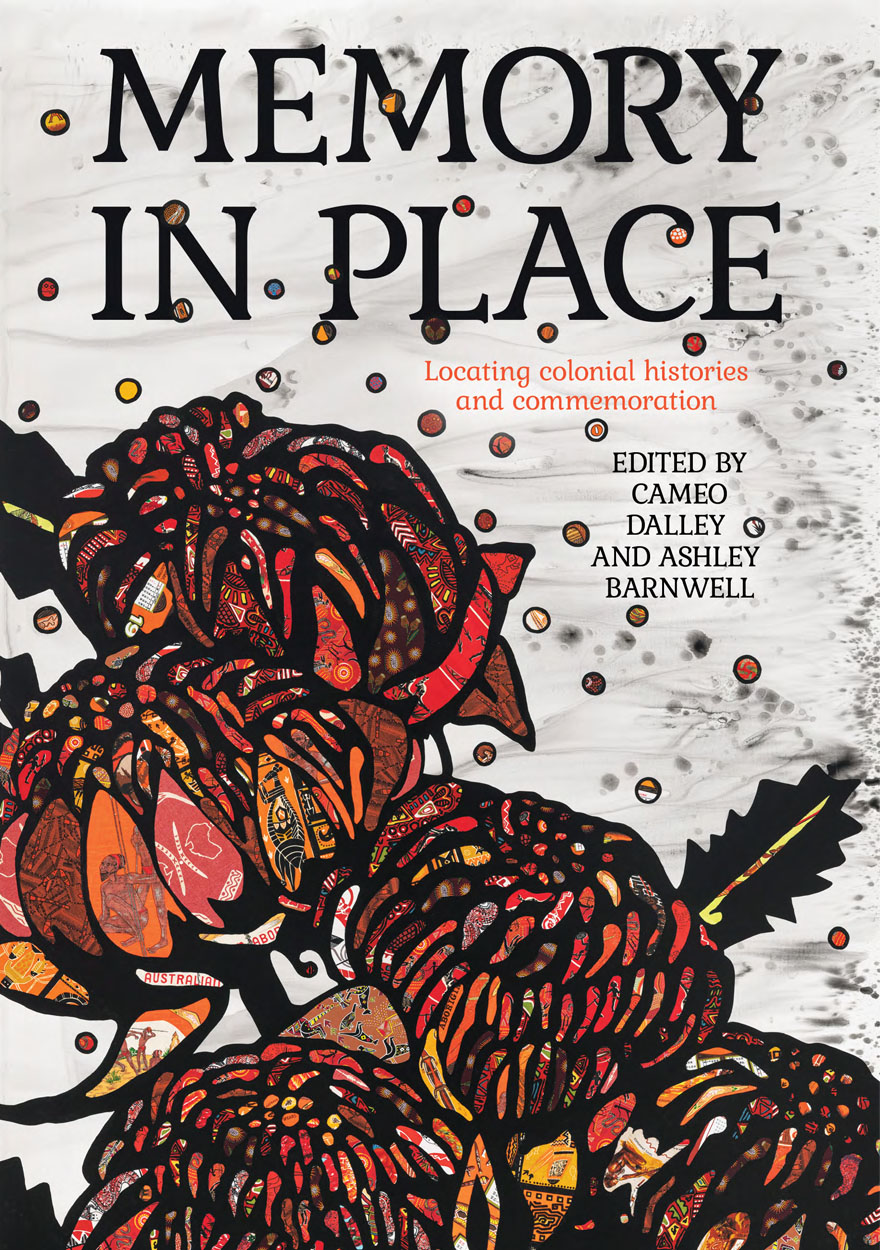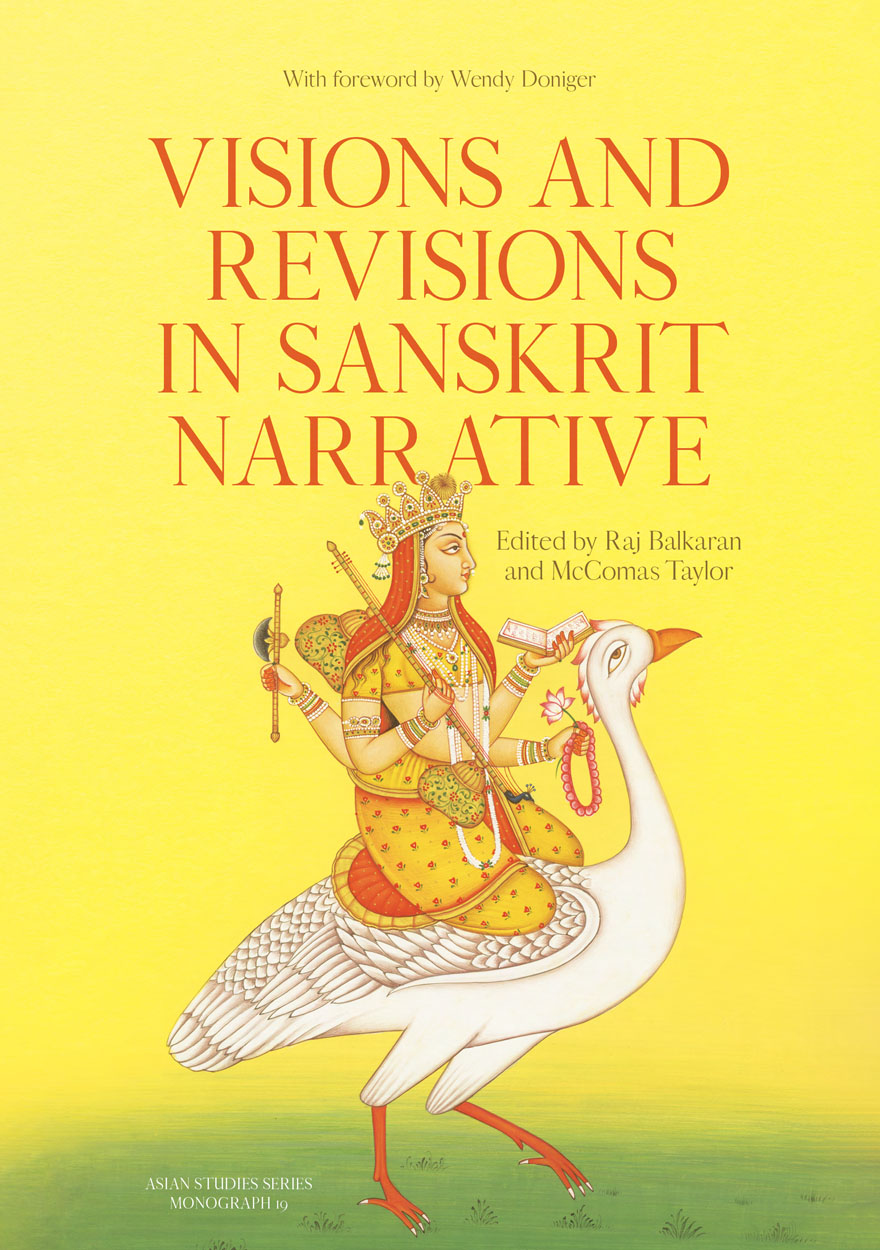Search titles
Displaying results 71 to 80 of 1136.

Memory in Place »
Locating colonial histories and commemoration
Edited by: Cameo Dalley, Ashley Barnwell
Publication date: November 2023
Memory in Place brings together Indigenous and non-Indigenous scholars and practitioners grappling with the continued potency of memories and experiences of colonialism. While many of these conversations have taken place on a national stage, this collection returns to the rich intimacy of the local. From Queensland’s sweeping Gulf Country, along the shelly beaches of south Sydney, Melbourne’s city gardens and the rugged hills of South Australia, through Central Australia’s dusty heart and up to the majestic Kimberley, the collection charts how interactions between Indigenous people, settlers and their descendants are both remembered and forgotten in social, political, and cultural spaces. It offers uniquely diverse perspectives from a range of disciplines including history, anthropology, memory studies, archaeology, and linguistics from both established and emerging scholars; from Indigenous and non-Indigenous contributors; and from academics as well as museum and cultural heritage practitioners. The collection locates some of the nation’s most pressing political issues with attention to the local, and the ethics of commemoration and relationships needed at this scale. It will be of interest to those who see the past as intimately connected to the future.

Made in China Journal: Volume 8, Issue 1, 2023 »
Edited by: Ivan Franceschini, Nicholas Loubere
Publication date: November 2023
The year 2023 began with a series of jolts in China, as the government abruptly rolled back its notoriously strict pandemic measures following countrywide protests in late 2022. While external popular perceptions saw China as being uniformly locked down for the first years of the pandemic, the reality was that the country’s pandemic governance was unevenly applied and varied substantially from place to place. The result was mixed—and often even contradictory—attempts to control the spread of SARS-CoV-2, with vastly differentiated experiences on the ground. While heterogeneous and fragmented governance in China is nothing new—and indeed is the basis of how most scholars understand policy implementation in the country—the pandemic nevertheless produced patterns of governance that were at times surprising, while also reinforcing previous trends. This issue of the Made in China Journal examines patterns of pandemic governance and the subjectivities associated with living through lockdown and the ever-present possibility of quarantine.

Visions and Revisions in Sanskrit Narrative »
Studies in the Sanskrit Epics and Purāṇas
Edited by: Raj Balkaran, McComas Taylor
Publication date: November 2023
Sanskrit narrative is the lifeblood of Indian culture, encapsulating and perpetuating insights and values central to Indian thought and practice. This volume brings together eighteen of the foremost scholars across the globe, who, in an unprecedented collaboration, accord these texts the integrity and dignity they deserve. The last time this was attempted, on a much smaller scale, was a generation ago, with Purāṇa Perennis (1993). The pre-eminent contributors to this landmark collection use novel methods and theory to meaningfully engage Sanskrit narrative texts, showcasing the state of contemporary scholarship on the Sanskrit epics and purāṇas.

The Road to Batemans Bay »
Speculating on the South Coast During the 1840s Depression
Authored by: Alastair Greig
Publication date: November 2023
The Road to Batemans Bay is the story of competing ventures to create ‘the Great Southern Township’ on the South Coast of New South Wales in the early 1840s. The idea of developing the furthest reaches of settlement was linked to the hopes of southern woolgrowers for a road from their properties to the coast, over the Great Dividing Range. The township proponents dreamed that having a quicker and cheaper connection to Sydney would allow them to open a port second only to Port Jackson.
The scene begins with the proposed coastal township of St Vincent, in an age of optimism: settlement is expanding, exports are growing and land prices are soaring, generating Australia’s first land boom. Before long, however, the colony experiences a catastrophic economic depression whose ‘pestilential breath’ infects those with a stake in the coastal townships. Alastair Greig follows the fate of these individuals, while also speculating on the broader fate of South Coast development during the mid-nineteenth century.
Greig gives a unique insight into many aspects of colonial life—including the worlds of Sydney’s merchants, auctioneers, land speculators, surveyors, map-makers and lawyers—as well as its maritime challenges. The Road to Batemans Bay is a chronicle of how Australia first developed its land-gambling habit and how land speculation led to the road to ruin.

The Compleat Busoni, Volume 3 »
Ending to Dr. Faust and the definitive realisations of the Fantasia Contrappuntistica
Authored by: Larry Sitsky
Publication date: November 2023
VOLUME 3: I. Ending to Dr. Faust II. Definitive version of the Fantasia Contrappuntistica for two pianos III. Concerto for Orchestra: Completion and orchestration of the Fantasia Contrappuntistica.
Larry Sitsky, professor emeritus at The Australian National University, is an internationally known composer, pianist, scholar, and teacher. His books are fundamental reference works on subjects such as Australian piano music, the 20th-century avant-garde, the piano music of Anton Rubinstein, the early 20th-century Russian avant-garde, and the classical reproducing piano roll.
The Compleat Busoni is the result of Sitsky’s lifelong focus on the composer Ferruccio Busoni. Over three volumes, Sitsky surveys Busoni’s vast output, provides an ending to the unfinished opera Dr. Faust, and presents definitive realisations of the Fantasia Contrappuntistica in two-piano and orchestral versions. New insights into Busoni’s style and aesthetics are an integral aspect of this work.
Format: Hardback

The Compleat Busoni, Volume 2 »
Busoni’s other music: A complete survey
Authored by: Larry Sitsky
Publication date: November 2023
VOLUME 2: Busoni’s other music: A complete survey.
Larry Sitsky, professor emeritus at The Australian National University, is an internationally known composer, pianist, scholar, and teacher. His books are fundamental reference works on subjects such as Australian piano music, the 20th-century avant-garde, the piano music of Anton Rubinstein, the early 20th-century Russian avant-garde, and the classical reproducing piano roll.
The Compleat Busoni is the result of Sitsky’s lifelong focus on the composer Ferruccio Busoni. Over three volumes, Sitsky surveys Busoni’s vast output, provides an ending to the unfinished opera Dr. Faust, and presents definitive realisations of the Fantasia Contrappuntistica in two-piano and orchestral versions. New insights into Busoni’s style and aesthetics are an integral aspect of this work.
Format: Hardback

Sisters in Peace »
The Women’s International League for Peace and Freedom in Australia, 1915–2015
Authored by: Kate Laing
Publication date: November 2023
Is preparing for war the best means of preserving peace? In Sisters in Peace, Kate Laing contends that this question has never been solely the concern of politicians and strategists. She maps successive generations of twentieth-century women who were eager to engage in political debate even though legislative and cultural barriers worked to exclude their voices.
In 1915, during the First World War, the Women’s International Congress at The Hague was convened after alarmed and bereaved women from both sides of the conflict insisted that their opinions on war and the pathway to peace be heard. From this gathering emerged the Women’s International League for Peace and Freedom (WILPF), which to this day campaigns against militarism and nuclear weapons. In Australia, the formation of a section of WILPF connected political women to a worldwide network that sustained their anti-war activism throughout the last century.
In examining the rise of WILPF in Australia, Sisters in Peace provides a gendered history of this country’s engagement with the politics of internationalism. This is a history of WILPF women who committed to peace activism even as Australia’s national identity and military allegiances shifted over time—a history that has until now been an overlooked part of the Australian peace movement.

Adapting for Inertia »
Delivering Large Government ICT Projects in Australia and New Zealand
Authored by: Grant Douglas
Publication date: October 2023
Despite much learning and research over many decades, large ICT software projects have continued to experience poor outcomes or fallen short of original expectations—some spectacularly so. This is the case in the Australian and New Zealand public sectors, even though these projects operate within historically developed institutional frameworks that provide the rules, guidelines and controls, and aim to consistently improve outcomes.
Something is amiss. In Adapting for Inertia, Grant Douglas questions the effectiveness of these institutional frameworks in governing large ICT software projects in the Australian and New Zealand public sectors. He also gauges the perspectives of a large number of actors in projects in both sectors and examines two case studies in detail.
The main narrative to emerge is that the institutional frameworks are in a state of inertia: they are failing to adapt, owing to various institutional factors—all of which have public policy implications. Sadly, Douglas finds, this inertia is likely to continue. If there is difficulty in changing the capacity to govern, he proposes, policymakers should look to change the nature of what is to be governed.

Return to Volcano Town »
Reassessing the 1937–1943 Volcanic Eruptions at Rabaul
Authored by: R. Wally Johnson, Neville A. Threlfall
Publication date: October 2023
Wally Johnson and Neville Threlfall re-examine the explosive volcanic eruptions that in 1937–43 killed more than 500 people in the Rabaul area of East New Britain, Papua New Guinea. They reassess this disaster in light of the prodigious amount of new scientific and disaster-management work that has been undertaken there since about 1971, when strong tectonic earthquakes shook the area. Comparisons are made in particular with volcanic eruptions in 1994–2014, when half of Rabaul town was destroyed and then abandoned.
A striking feature of historical eruptive periods at Rabaul is the near‑simultaneous activity at Vulcan and Tavurvur volcanoes, on either side of Rabaul Harbour. Such rare ‘twin’ eruptions are interpreted to be the result of a common magma reservoir beneath the harbour. This interpretation has implications for ongoing hazard and risk assessments and for volcano monitoring in the area.

A Young Englishman in Victorian Hong Kong »
The Diaries of Chaloner Alabaster, 1855–1856
Authored by: Benjamin Penny
Publication date: October 2023
In August 1855, 16-year-old Chaloner Alabaster left England for Hong Kong, to take up a position as a student interpreter in the China Consular Service. He would stay for almost 40 years, climbing the rungs of the service and eventually becoming consul-general of Canton. When he retired he returned to England and received a knighthood. He died in 1898. Throughout his adult life, Alabaster kept diaries.
In the first four volumes of these diaries, collected here by Benjamin Penny, the teenage Alabaster recorded his thoughts and observations, told himself anecdotes, and exploded in outbursts of anger and frustration. He was young and enthusiastic, and the everyday sights, sounds and smells of Hong Kong were novel to him. He describes how the Chinese people around him ironed clothes, dried flour and threshed rice; how they gambled, prepared their food and made bean curd; and what opera, new year festivities and the birthday of the Heavenly Empress were like. Like many a young Victorian, he was also a keen observer of natural history, fascinated by fireflies and ants, corals and sea slugs, and the volcanic origins of the landscape.
Alabaster’s diaries are a unique, vibrant and riveting record of life in the young British colony on the cusp of the Second Opium War. With A Young Englishman in Victorian Hong Kong, Penny sheds new light on the history of the region.



